#Fantasy Character Development
Explore tagged Tumblr posts
Text
The Evolution of the Chosen One Trope in Fantasy Literature
Ah, the Chosen One—that special individual, often plucked from obscurity, destined to save the world. It’s a trope as old as storytelling itself, but one that has seen quite the evolution in fantasy literature. Today, we’re going to delve into this ubiquitous trope. We will explore how it’s changed over time and examine how “The Fall of Wolfsbane” turns this concept on its head. The Classic…
#Chosen One deconstruction#Chosen One evolution#Chosen One trope#complex fantasy heroes#destiny in fantasy#fantasy archetypes#Fantasy Character Development#fantasy literature#fantasy narrative structure#fantasy storytelling#identity in fantasy#modern fantasy tropes#multiple protagonists#Ragnar Wolfsbane#reluctant hero#subversion in fantasy#subverting Chosen One#The Fall of Wolfsbane#traditional fantasy tropes
0 notes
Text
Writing Tips Master Post
Edit: Some posts may be deleted
Character writing/development:
Character Arcs
Making Character Profiles
Character Development
Comic Relief Arc
Internal Conflict
Character Voices
Creating Distinct Characters
Creating Likeable Characters
Writing Strong Female Characters
Writing POC Characters
Building Tension
Writing Grumpy x Sunshine Tropes
Writing Sexuality & Gender
Writing Manipulative Characters
Writing Mature Young Characters
Plot devices/development:
Intrigue in Storytelling
Enemies to Lovers
Alternatives to Killing Characters
Worldbuilding
Misdirection
Things to Consider Before Killing Characters
Foreshadowing
Narrative (+ how to write):
Emphasising the Stakes
Avoid Info-Dumping
Writing Without Dialogue
1st vs. 2nd vs. 3rd Perspective
Fight Scenes (+ More)
Transitions
Pacing
Writing Prologues
Dialogue Tips
Writing War
Writing Cheating
Writing Miscommunication
Writing Unrequited Love
Writing a Slow Burn Btwn Introverts
Writing Smut
Writing Admiration Without Attraction
Writing Dual POVs
Writing Unreliable Narrators
Worldbuilding:
Worldbuilding: Questions to Consider
Creating Laws/Rules in Fantasy Worlds
Book writing:
Connected vs. Stand-Alone Series
A & B Stories
Writer resources:
Writing YouTube Channels, Podcasts, & Blogs
Online Writing Resources
Outlining/Writing/Editing Software
Translation Software for Writing
Writer help:
Losing Passion/Burnout
Overcoming Writer's Block
Fantasy terms:
How To Name Fantasy Races (Step-by-Step)
Naming Elemental Races
Naming Fire-Related Races
How To Name Fantasy Places
Ask games:
Character Ask Game #1
Character Ask Game #2
Character Ask Game #3
Miscellaneous:
Writing Tips
Writing Fantasy
Miscommunication Prompts
Variety in Sentence Structure (avoiding repetition)
#masterlist#masterpost#writeblr#writing#writing tips#writing advice#writing help#writing resources#author resources#writer resources#creative writing#character writing#character development#plot development#narrative#book writing#writers block#writer stuff#writer things#fantasy writing#writer ask game#deception-united
29K notes
·
View notes
Text
Principles and Laws of Magic for Fantasy Writers
Fundamental Laws
1. Law of Conservation of Magic- Magic cannot be created or destroyed, only transformed.
3. Law of Equivalent Exchange- To gain something, an equal value must be given.
5. Law of Magical Exhaustion- Using magic drains the user’s energy or life force.
Interaction and Interference
4. Law of Magical Interference- Magic can interfere with other magical effects.
6. Law of Magical Contamination- Magic can have unintended side effects.
8. Law of Magical Inertia- Magical effects continue until stopped by an equal or greater force.
Resonance and Conditions
7. Law of Magical Resonance- Magic resonates with certain materials, places, or times.
9. Law of Magical Secrecy- Magic must be kept secret from the non-magical world.
11. Law of Magical Hierarchy- Different types of magic have different levels of power and difficulty.
Balance and Consequences
10. Law of Magical Balance- Every positive magical effect has a negative consequence.
12. Law of Magical Limitation- Magic has limits and cannot solve every problem.
14. Law of Magical Rebound- Misused magic can backfire on the user.
Special Conditions
13. Law of Magical Conduits- Certain objects or beings can channel magic more effectively.
15. Law of Magical Cycles- Magic may be stronger or weaker depending on cycles (e.g., lunar phases).
17. Law of Magical Awareness- Some beings are more attuned to magic and can sense its presence.
Ethical and Moral Laws
16. Law of Magical Ethics- Magic should be used responsibly and ethically.
18. Law of Magical Consent- Magic should not be used on others without their consent.
20. Law of Magical Oaths- Magical promises or oaths are binding and have severe consequences if broken.
Advanced and Rare Laws
19. Law of Magical Evolution- Magic can evolve and change over time.
20. Law of Magical Singularities- Unique, one-of-a-kind magical phenomena exist and are unpredictable.
Unique and Imaginative Magical Laws
- Law of Temporal Magic- Magic can manipulate time, but with severe consequences. Altering the past can create paradoxes, and using time magic ages the caster rapidly.
- Law of Emotional Resonance- Magic is amplified or diminished by the caster’s emotions. Strong emotions like love or anger can make spells more powerful but harder to control.
- Law of Elemental Harmony- Magic is tied to natural elements (fire, water, earth, air). Using one element excessively can disrupt the balance and cause natural disasters.
- Law of Dream Magic- Magic can be accessed through dreams. Dreamwalkers can enter others’ dreams, but they risk getting trapped in the dream world.
- Law of Ancestral Magic- Magic is inherited through bloodlines. The strength and type of magic depend on the caster’s ancestry, and ancient family feuds can influence magical abilities.
- Law of Symbiotic Magic- Magic requires a symbiotic relationship with magical creatures. The caster and creature share power, but harming one affects the other.
- Law of Forgotten Magic- Ancient spells and rituals are lost to time. Discovering and using forgotten magic can yield great power but also unknown dangers.
- Law of Magical Echoes- Spells leave behind echoes that can be sensed or traced. Powerful spells create stronger echoes that linger longer.
- Law of Arcane Geometry- Magic follows geometric patterns. Spells must be cast within specific shapes or alignments to work correctly.
- Law of Celestial Magic- Magic is influenced by celestial bodies. Spells are stronger during certain astronomical events like eclipses or planetary alignments.
- Law of Sentient Magic- Magic has a will of its own. It can choose to aid or hinder the caster based on its own mysterious motives.
- Law of Shadow Magic- Magic can manipulate shadows and darkness. Shadowcasters can travel through shadows but are vulnerable to light.
- Law of Sympathetic Magic- Magic works through connections. A spell cast on a representation of a person (like a doll or portrait) affects the actual person.
- Law of Magical Artifacts- Certain objects hold immense magical power. These artifacts can only be used by those deemed worthy or who possess specific traits.
- Law of Arcane Paradoxes- Some spells create paradoxes that defy logic. These paradoxes can have unpredictable and often dangerous outcomes.
- Law of Elemental Fusion- Combining different elemental magics creates new, hybrid spells with unique properties and effects.
- Law of Ethereal Magic- Magic can interact with the spirit world. Ethereal mages can communicate with spirits, but prolonged contact can blur the line between life and death.
- Law of Arcane Symbiosis- Magic can bond with technology, creating magical machines or enchanted devices with extraordinary capabilities.
- Law of Dimensional Magic- Magic can open portals to other dimensions. Dimensional travelers can explore alternate realities but risk getting lost or encountering hostile beings.
- Law of Arcane Sacrifice- Powerful spells require a sacrifice, such as a cherished memory, a personal item, or even a part of the caster’s soul.
#writer#writing#writer things#writerblr#writerscorner#writing inspiration#writing tips#author#writers and poets#ao3 writer#writeblr#fantasy writer#sci fi and fantasy#writing inspo#writing resources#dnd campaign#dnd character#character development#original character#amwriting#writers community#writer stuff#writing blog#writers block#writerscommunity#worldbuilding#world building#fantasy series
6K notes
·
View notes
Text
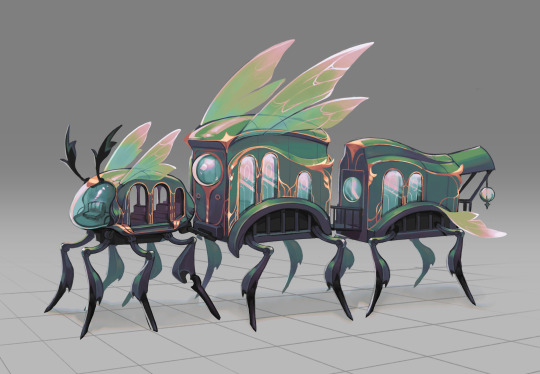
bug bus bug bus bug bus!!!
#concept art#world development#vehicle design#fantasy art#art nouveau#zero art#piece for a visdev class! rare chance to do something other than characters
7K notes
·
View notes
Text
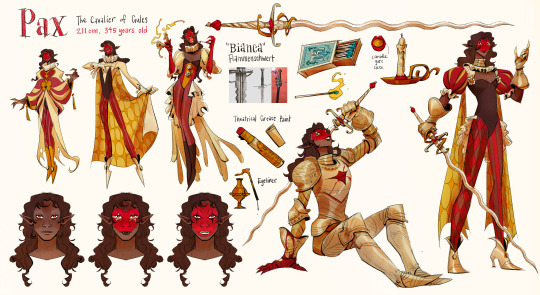
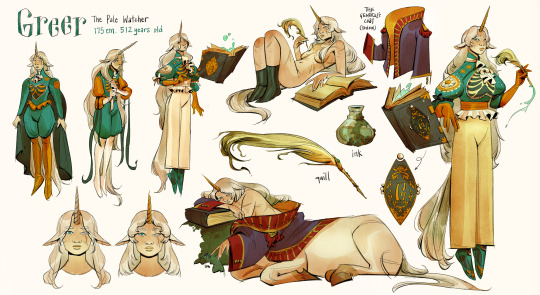
starting another project bc i have no self control :9 but also bc i wanted to try out a different aesthetic
#character design#character art#character sheet#visual development#fantasy art#my art#the bestiary#vickychendraws art#crowwkui art
3K notes
·
View notes
Text
🍖 How to Build a Culture Without Just Inventing Spices and Necklaces
(a worldbuilding roast. with love.)
So. You’re building a fantasy world, and you’ve just invented: → Three types of ceremonial jewelry → A spice that tastes like cinnamon if it were bitter and cursed → A holiday where everyone wears gold and screams at dawn
Cute. But that’s not culture. That’s aesthetics.
And if your worldbuilding is all outfits, dances, and spice blends with vaguely mystical names, your story’s probably going to feel like a cosplay convention held inside a Pinterest board.
Here’s how to fix that—aka: how to build a real, functioning culture that shapes your story, not just its vibes.
─────── ✦ ───────
🔗 Culture Is Built on Power, Not Just Style
Ask yourself: → Who’s in charge, and why? → Who has land? Who doesn’t? → What’s considered taboo, sacred, or punishable by death?
Culture is shaped by who gets to make the rules and who gets crushed by them. That’s where things like religion, family structure, class divisions, gender roles, and social expectations actually come from.
Start there. Not at the embroidery.
─────── ✦ ───────
2.🪓 Culture Comes From Conflict
Did this society evolve peacefully? Was it colonized? Did it colonize? Was it rebuilt after a war? Is it still in one?
→ What was destroyed and mythologized? → What do the survivors still whisper about? → What do children get taught in school that’s… suspiciously sanitized?
No culture is neutral. Every tradition has a history, and that history should taste like blood, loss, or propaganda.
─────── ✦ ───────
3.🧠 Belief Systems > Customs Lists
Sure, rituals and holidays are cool. But what do people believe about: → Death? → Love? → Time? → The natural world? → Justice?
Example: A society that believes time is cyclical vs. one that sees time as linear will approach everything—from prison sentences to grief—completely differently.
You don’t need to invent 80 gods. You need to know what those gods mean to the people who pray to them.
─────── ✦ ───────
4.🫀 Culture Controls Behavior (Quietly)
Culture shows up in: → What people apologize for → What insults cut deepest → What people are embarrassed about → What’s praised publicly vs. what’s hidden privately
For instance: → A culture obsessed with stoicism won’t say “I love you.” They’ll say “Have you eaten?” → A culture built on legacy might prioritize ancestor veneration, archival writing, name inheritance.
This stuff? Way more immersive than giving everyone matching earrings.
─────── ✦ ───────
5. 🏠 Culture = Daily Life, Not Just Festivals
Sure, your MC might attend a funeral where people paint their faces blue. But what about: → Breakfast routines? → How people greet each other on the street? → Who cooks, and who eats first? → What’s considered “clean” or “proper”? → How is parenting handled? Divorce?
Culture is what happens between plot points. It should shape your character’s assumptions, language, fears, and habits—whether or not a festival is going on.
─────── ✦ ───────
6. 💬 Let Your Characters Disagree With Their Own Culture
A culture isn’t a monolith.
Even in deeply traditional societies, people: → Rebel → Question → Break rules → Misinterpret laws → Mock sacred things → Act hypocritically → Weaponize or resist what’s expected
Let your characters wrestle with the culture around them. That’s where realism (and tension) lives.
─────── ✦ ───────
7.🧼 Beware the “Pretty = Good” Trap
Worldbuilding gets boring fast when: → The protagonist’s homeland is beautiful and pure → The enemy’s culture is dark and “barbaric” → Every detail just reinforces who the reader should like
You can—and should—challenge the aesthetic hierarchy. → Let ugly things be beloved. → Let beautiful things be corrupt. → Let your MC romanticize their culture and then get disillusioned by it later.
─────── ✦ ───────
📍 TL;DR (but like, spicy): → Culture is not food and jewelry. → Culture is power, fear, memory, contradiction. → Stop inventing spices until you know who starved last winter. → Let your world feel lived in, not curated.
The best cultural worldbuilding doesn’t look like a list. It feels like a system. A pressure. A presence your characters can’t escape—even if they try.
Now go. Build something real. (You can add spices later.)
—rin t. // writing advice for worldbuilders with rage and range // thewriteadviceforwriters
Sometimes the problem isn’t your plot. It’s your first 5 pages. Fix it here → 🖤 Free eBook: 5 Opening Pages Mistakes to Stop Making:
🕯️ download the pack & write something cursed:
#worldbuilding#writing advice#writeblr#fantasy writing#writing tips#amwriting#writing community#culturebuilding#fiction writing#writing realism#storybuilding#fantasy worldbuilding#speculative fiction#writer resources#writing help#character development#society building#writing immersion#realistic worldbuilding#rin t speaks#thewriteadviceforwriters#writing#writers block#writers on tumblr#writers and poets#on writing#how to write#creative writing#how to start a novel#writing resources
896 notes
·
View notes
Text
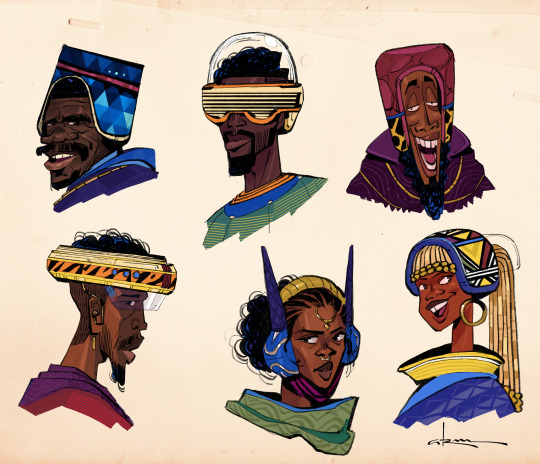
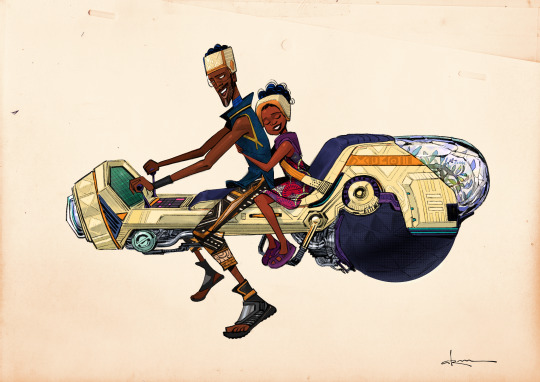
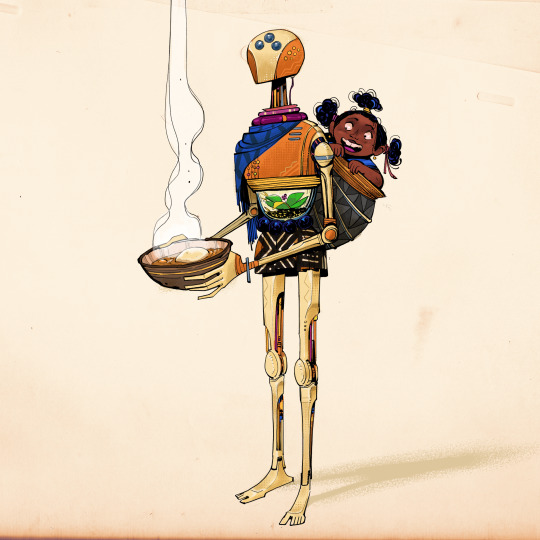


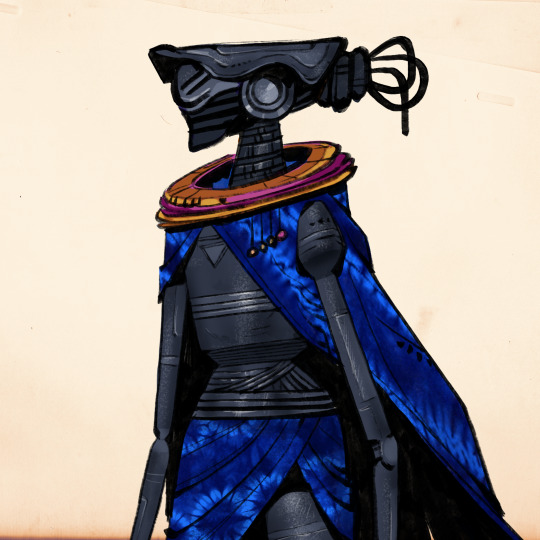
SUDÄAN, The Nubian Empire
3K notes
·
View notes
Text

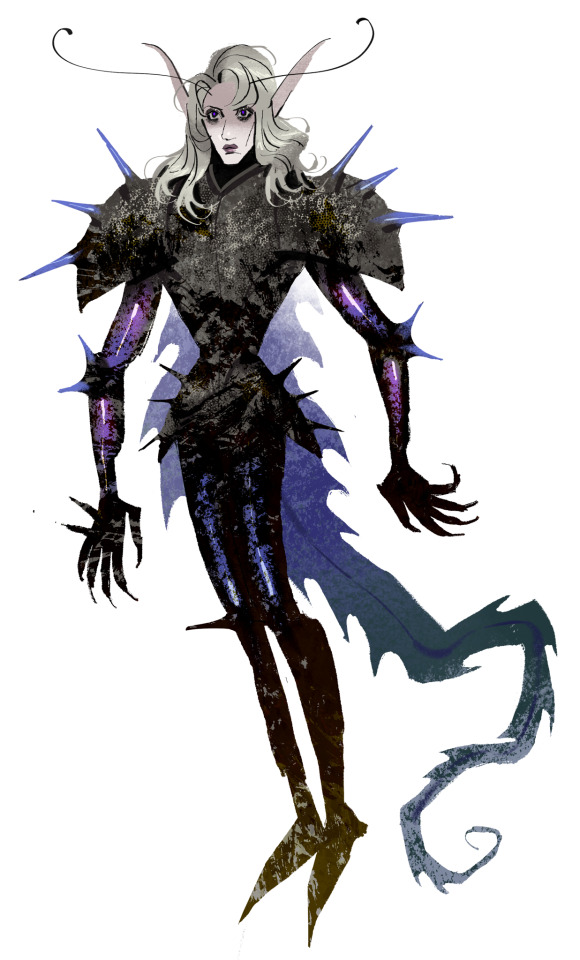
417 notes
·
View notes
Text

Three godmothers an' a crown
#discworld#terry pratchett#wyrd sisters#granny weatherwax#magrat garlick#nanny ogg#fantasy#magic#witch#cottage#character design#sketch#storyboard#visual development#traditional art#lancre
754 notes
·
View notes
Text
I am feeling a way about Aelwyn continually inviting Adane to hang out at her apartment even though it's a disaster area with her ten ornery cats and scattered microwave dinner trays. I know a part of that is Brennan just wanting a reason to show the audience the very funny contrast from, "I came here to fuck!" to "Nooo Hector :(" But there's also something to her being like, "I want you here with me even though it will entirely ruin any possible remaining mystique around my cool girl persona"--something she absolutely still cares about in a general sense as she tells Adaine not to tell Fabian anyone else about what her apartment is like. It's one thing to be nice, but it's another to be vulnerable, especially when you've been raised in such a way that every weakness was used as a future attack--so much so that her entire brand of magic is protecting herself and not being vulnerable.
#dimension 20#fantasy high#adaine abernant#aelwyn abernant#d20#spoilers#not gonna apologize for all the abernant posting#bc I've been waiting for this for YEARS#this is my oscars#anyway I love it when a bit is anchored in like character development#fy aelwyn would have NEVER let adaine see her being this uncool#now she's like pleassssse visit me I miss you
2K notes
·
View notes
Text
Villainy That Hits Different
The Villain Who Used to Be the Hero Once upon a time, they fought for the right side. They stood in the light, believed in justice, played by the rules. But rules don’t protect you when the world turns its back on you. Rules don’t bring back the people you lost. They learned the hard way that being a hero doesn’t mean you win. Being a hero just means you’re the idiot who refused to do what needed to be done. So they stopped being the hero. And for the first time in their life, they started winning.
The Villain Who Believes They’re Saving the World They don’t want destruction for destruction’s sake. They don’t wake up every morning with some grand plan to cause chaos. No, they wake up thinking, I am the only one who sees the truth. That the world is broken, that the people in power are liars, that the so-called heroes are too weak to do what actually needs to be done. If people get hurt along the way? If blood has to be spilled? That’s the price of salvation.
The Villain Who Never Wanted This They didn’t start out like this. Once, they were kind. Once, they trusted. Once, they loved. But trust is a loaded gun, and kindness is just an invitation to be used. Every betrayal, every scar, every time they were told they weren’t enough, it shaped them. Molded them. Forged them into something unrecognizable. Now, when people whisper their name in fear, they don’t even flinch. Because the person they used to be is already dead.
The Villain Who’s Just So Damn Tired They fought against the darkness for so long. They believed in the cause, believed in the people, believed in something bigger than themselves. But there’s only so much loss a person can take before they break. Before they look around and think, Maybe it’s not worth it. Maybe the world doesn’t deserve saving. Maybe I should stop fighting the fire and let it burn.
The Villain Who Thinks They’re the Main CharacterIt’s not arrogance. It’s destiny. Every moment of their life, every hardship, every heartbreak, it all led to this. They aren’t just another person in this story. They are the story. And if that means tearing down the world to build one where they finally get what they deserve, then so be it.
The Villain Who Loves, Just Not Enough They care about someone. Maybe they even love them. But love has limits. Love has priorities. And when the choice is between their ambition and their heart, well… they never claimed to be selfless. They’ll wipe the tears off the person they love, tell them it was never supposed to be this way, and then walk away, because the world they’re trying to build matters more.
The Villain Who Was Made, Not Born People love to pretend that villains come out of nowhere, that some people are just bad. But villains aren’t born. They’re built. They’re made in the moments no one sees, when a child cries for help and no one comes. When kindness is punished. When every good thing is stripped away until there’s nothing left but anger and survival. And once they learned how to survive, they never looked back.
The Villain Who Is Right This is the villain that keeps you up at night. Because they don’t cackle. They don’t monologue about taking over the world. No, they look you in the eye and tell you the truth. And the truth? The truth makes sense. The truth is that the system is broken. That the people in charge are corrupt. That everything you thought was good is just another lie. And now you have to ask yourself… were they ever really the villain?
The Villain Who Hates Themselves More Than Anyone Else Does They know what they are. They don’t need your judgment. They don’t need your pity. Every awful thing they’ve done, every person they’ve hurt—, it haunts them. But stopping? Stopping would mean facing the damage, facing the wreckage, facing themselves. And they’d rather burn the whole world down before they do that.
The Villain Who Smiles Too Much They’re charming. They laugh easily. They make you feel like you’re the only person in the world when they look at you. And then they ruin your life with the same easy smile. Because there’s nothing more terrifying than a villain who enjoys every second of the destruction they cause.
The Villain Who Was the Only One Brave Enough to Do It The so-called heroes hesitated. They debated. They got stuck in their own morality, their own fears, their own limitations. But the villain? The villain didn’t hesitate. Because hesitation is weakness, and weakness gets people killed. And if being the villain means being the only one with the guts to fix things, so be it.
The Villain Who’s Obsessed With the Hero It’s not about hate. It’s never been about hate. It’s about them. The hero, the rival, the one person who makes the villain feel something other than rage. They don’t want to destroy them. They want to own them. They want to keep them close, force them to see the world the way they do. Because the villain doesn’t want to kill the hero. They want the hero to understand them.
The Villain Who’s Trying to Be Good… But Failing They want to change. Really, they do. But old habits die hard, and violence is easier than vulnerability. Every time they try to take the high road, something drags them back down. And maybe… maybe they don’t want to be saved. Maybe this is just who they are.
The Villain Who’s Already Dead Inside They don’t feel anymore. Not guilt. Not pain. Not remorse. Maybe they used to, but that part of them was carved out long ago. Now, they watch people cry, scream, beg, and they feel nothing. And if the world is so determined to call them a monster, then fine. They’ll be one.
The Villain Who Wins Because sometimes, the villain is smarter. Stronger. More ruthless. Sometimes, the villain planned better. The hero hesitated, and that was all it took. And now? Now, the villain gets to watch the hero fall apart as they realize… this isn’t a story where the good guy wins.
Evil isn’t always evil. Sometimes, it’s just a choice. Which one makes your blood run cold? 😈
Here’s the Show, Don’t Tell freebie book and my newsletter.
#writing#writerscommunity#writing tips#writer on tumblr#writer tumblr#oc character#writing advice#character development#writing help#writblr#evil oc#morally grey villain#write villain#writing villains#villain oc#fantasy writing#disney villains
449 notes
·
View notes
Text
The Power of Cultural Identity in Fantasy Narratives
In fantasy literature, few themes are as potent and relevant as the struggle between cultural assimilation and resistance. This conflict, mirroring real-world historical and contemporary issues, provides a fertile ground for exploring complex character dynamics and societal tensions. Today, we’ll delve into this theme using “The Fall of Wolfsbane” as our looking glass. The Clash of…

View On WordPress
#assimilation and resistance#colonialism in fantasy#cultural artefacts in fantasy#cultural assimilation in fantasy#cultural clash in fantasy#cultural identity in fantasy#cultural resistance#cultural struggle in fantasy#Fantasy Character Development#Fantasy Narratives#fantasy storytelling#fantasy world-building#hybrid identities in fantasy#identity in fantasy literature#linguistic imperialism in fantasy#power dynamics in fantasy#resistance in fantasy literature#The Fall of Wolfsbane#themes in fantasy novels
0 notes
Text
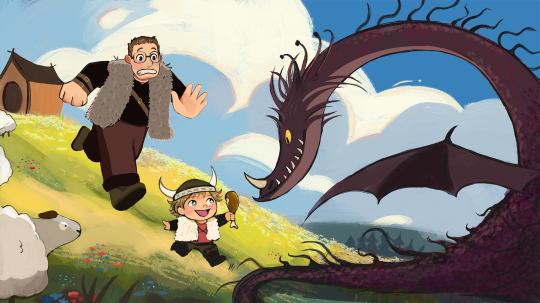
A fun family commission I worked on these last days. Its always great to do magical family moments they can treasure.
#artists on tumblr#illustration#animation#cute#artists of tumblr#character design#digital art#commission#dragons#dragon#dad#dad and son#commission art#open commissions#how to train your dragon#fantasy#concept art#visdev#visual development
660 notes
·
View notes
Text
Writing Characters with Wings: The Beauty, the Burden, and the Biomechanics
So you’re writing a character with wings. Angelic, draconic, demonic, fae, fallen, or otherwise — gorgeous. But if you want them to feel real, grounded in a world where wings are more than just aesthetics or metaphors, here’s your deep dive into everything you need to consider when writing winged characters.
Wingspan 101: The Numbers That Make It Work
Let’s talk size — because wings aren’t small, and the human body isn’t light.
A human-sized character needs massive wings to fly. The general rule from biology is that the wingspan must be at least 2.5 to 3 times the total body height to achieve lift — often larger if the character is dense with muscle or armor.
A 6-foot tall character would need wings at least 15-18 feet across (that’s 7.5–9 feet per wing!) — and even larger for powered flight or with weapons/gear/clothing.
Bat-like or dragon wings will be longer due to needing more surface area for lift, while bird wings rely more on shape, feathers, and aerodynamics.
And that’s not even getting into takeoff — unless they’re leaping off cliffs, running starts or magical assistance are necessary.
✍️ Tip: If your winged character flies easily from the ground, consider making flight magically assisted rather than biologically plausible. That frees you from gravity’s judgmental eye.
Everyday Difficulties of Wing Ownership
Having wings isn’t all ethereal silhouettes and poetic metaphors. Here are the gritty, unglamorous realities your characters would face:
Sleeping
Wings get crushed if you lie on your back.
Side sleeping is awkward if your wings are large or jointed.
Custom bedding? Absolutely. Maybe even hammocks, curved cushions, or nest-like bedding.
Clothing
Normal shirts and jackets won’t work.
You’ll need wing slits, open backs, or wraps that tie around the body. Think Roman togas or modern backless dresses.
Armour? Custom-forged and probably a pain. Don’t forget feather damage or joint pinching.
✍️ Consider how your character feels about their body being constantly on display. Wings often mean exposed backs and shoulders, which may create vulnerability, vanity, or resentment.
Doors and Crowds
Wide wings = tight doorways, smacking people in corridors, and no stealth in crowds.
Imagine folding your wings every time you sit, walk through a room, or pass a stranger.
✍️ Tip: You can give them a signature motion — like a wing flick when annoyed, or folding them tightly when anxious. Use wings as expressive body language.
Anatomy & Pain: The Biology Behind the Beauty
Let’s be honest: if we’re slapping wings on a human back, we’re violating all kinds of anatomical logic — but that’s okay if you build consistency into your world.
Placement
Real wings (like bird wings) emerge from the shoulder blade area and require massive muscles in the chest and upper back.
This means your winged character would likely have a thickened thorax, and expanded ribcage, and potentially a modified spine to support the muscle and articulation.
Pain and Maintenance
Wings get sore after long flights.
Molting? Yes. Feathers die and fall off.
Injuries like tears, broken bones, or ruffled feathers aren’t just painful — they can be humiliating, especially if wings are a sign of status or identity.
✍️ Treat wings like hands or limbs — they require grooming, get tired, and define personality.
Symbolism & Emotional Weight
Wings often carry metaphorical meaning — and this is where your story can shine.
Liberation or Burden?
Are wings a gift? A sign of divine favor?
Or are they a curse — a mark of something inhuman, a heavy cross to bear?
Intimacy
Touching someone’s wings might be deeply intimate, even erotic or sacred.
Wing injuries could feel like a violation, akin to broken hands or scarred faces.
✍️ Try writing a scene where someone helps preen feathers, cleans wounds, or covers their wings with a blanket. That’s not just care — that’s vulnerability, love, and trust in one.
Emotional Tics
Wings can curl inwards when frightened or sad, flare open when defensive, or shudder when someone’s overwhelmed.
Use them to externalise emotion without needing dialogue.
Societal & Cultural Impacts
If some people have wings and others don’t — that matters. A lot.
Are winged beings seen as divine, or dangerous?
Can they fly freely, or are they kept grounded by laws, jealousy, or architecture?
Are winged people segregated, idolised, or feared?
✍️ A culture that evolved around flight might have multi-level cities, mid-air rituals, different greetings, or class divisions based on wingspan.
Dark Wings, Darker Implications
If your character can’t fly — even with wings — that’s a story.
Maybe their wings are damaged, too small, or shamed.
Maybe they’re haunted by a fall or terrified of heights.
What does that do to a person — to have wings but be bound to the ground?
That contradiction can become a core part of a character arc — not just about wings, but about freedom, failure, and fear.
In Summary
Characters with wings are so much more than “a human but cooler.” They’re a walking contradiction — majestic and awkward, powerful and vulnerable, soaring and struggling.
So write their aches. Write the mornings they wake up with crumpled feathers. Write the power trip of rising above the world, and the terror of falling. Write them like people — winged, wounded, wonderful people.
💬 Reblog with your favorite winged characters, your original ones, or the best wing-related scene you’ve ever read or written! I’d love to see what you’re working on.
#writing tips#fantasy writing#winged character#character building#worldbuilding#speculative fiction#oc writing#writeblr#writing community#writers of tumblr#creative writing#vivsinkpot#amwriting#writing advice#character development#vivwrites
305 notes
·
View notes
Text

Mavka - character sheet. I have a small personal project of designing characters from Ukrainian classics - "The Forest Song". Mavka is the female lead in the story, a forest spirit who fell in love with a human.
#artists on tumblr#fantasy art#character design#digital artist#characer design#book art#visual development#folklore#mavka
755 notes
·
View notes
Text




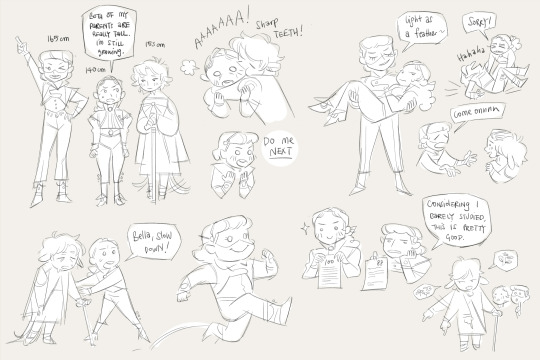
redesigninggg
#character design#character art#oc#character sheet#fantasy#visual development#the bestiary#vickychendraws art#crowwkui art
1K notes
·
View notes